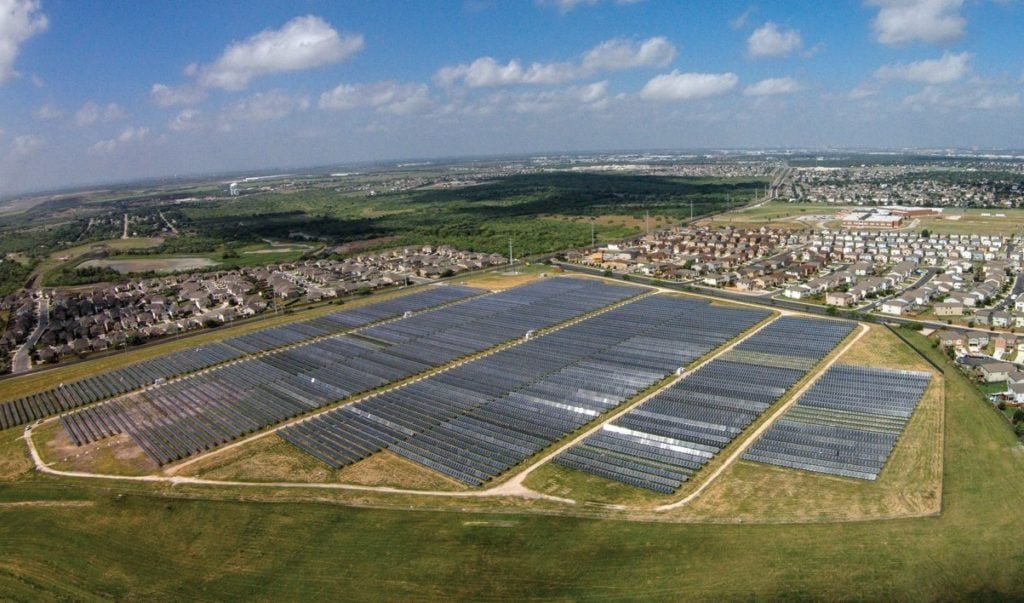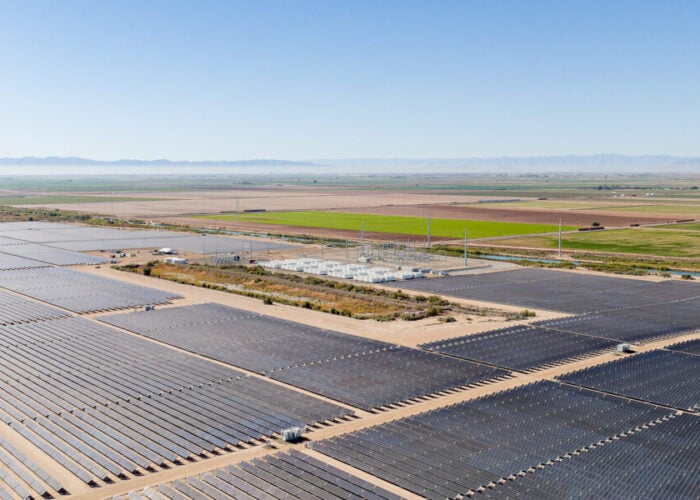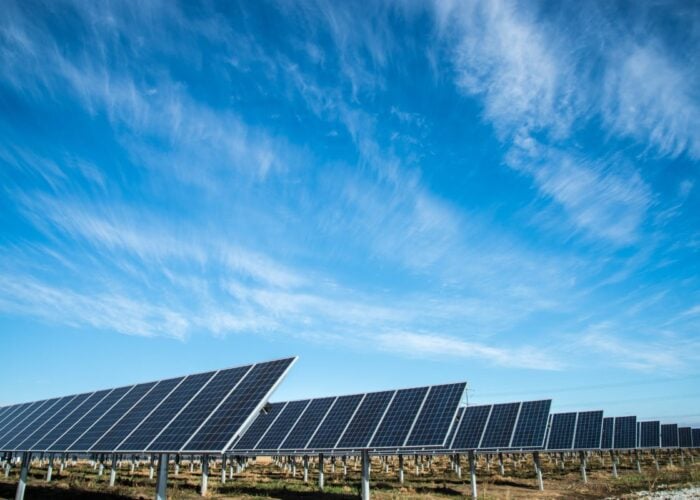
US solar players have hailed the country’s landmark Inflation Reduction Act (IRA), signed into law by President Joe Biden this week, as a once-in-a-generation legislation that lays the groundwork for accelerated PV deployment and a significant ramp-up in domestic manufacturing.
Billed as the biggest climate package in US history, the Act earmarks US$369 billion for decarbonisation efforts, featuring expanded tax credits for utility-scale solar as well as manufacturing credits for a host of PV components.
Unlock unlimited access for 12 whole months of distinctive global analysis
Photovoltaics International is now included.
- Regular insight and analysis of the industry’s biggest developments
- In-depth interviews with the industry’s leading figures
- Unlimited digital access to the PV Tech Power journal catalogue
- Unlimited digital access to the Photovoltaics International journal catalogue
- Access to more than 1,000 technical papers
- Discounts on Solar Media’s portfolio of events, in-person and virtual
During Tuesday’s signing ceremony Biden said the act “is the biggest step forward on climate ever”, adding: “It’s going to allow us to boldly take additional steps toward meeting all of my climate goals”.
The legislation sets the stage for record-breaking growth in US solar deployment. According to research from Princeton University, the IRA could lead to 49GW of solar deployed per year by 2025, around five times higher than capacity additions in 2020.
When compared to a scenario without tax credits, research firm Wood Mackenzie (WoodMac) forecast that passage of the IRA will increase the utility-scale capacity buildout by 86% over the next ten years.
With energy provisions included in the Build Back Better (BBB) Act, WoodMac previously forecasted 438GW of utility-scale buildout in the US in the next ten years. “We expect next forecast will be very similar, as clean energy provisions in IRA are very similar to those originally in BBB,” says Sylvia Leyva Martinez, a senior research analyst at Wood Mackenzie.
A key component of the legislation is the extension of the investment tax credit (ITC) at 30% for commercial and residential solar systems for the next decade, while standalone energy storage facilities will also be eligible for the credit, as reported by sister site Energy-Storage.news.
The IRA also adds solar projects to the list of power generation facilities eligible for the production tax credit (PTC). While the PTC is based on the power produced by a project, the ITC allows investors to claim a one-time credit based on the project’s value. Solar plants can’t receive both credits.
Having the ITC and PTC extended for a decade “is the most crucial part” of the IRA for the country’s solar sector, says Jessica Lawrence-Vaca, vice president for government affairs at EPC contractor SOLV Energy.
“We’re really, really pleased with the end result. This really is a once-in-a-generation piece of legislation,” she adds.
According to WoodMac, the US solar industry has never had a period in its future with policy certainty for more than ten years. “Having certainty for a ten-plus-year period dramatically changes the outlook for the solar sector,” says Leyva Martinez.
“The utility-scale segment operates with very narrow margins, so changes as slight as US$0.03 – 0.05/W can make or break the project economics.”
Christopher Seiple, vice chairman of energy transition and power and renewables practice at WoodMac, says that while solar is already competitive with the costs of conventional generation technologies in many US regions, the tax credits make solar competitive with wholesale power market prices and make it possible for utilities to add renewable resources without raising customer rates.
“And now developers and manufacturers can make investments knowing these policies will be in place for 10-plus years,” he adds.
Manufacturing support
The legislation is also in line with measures found in the Solar Energy Manufacturing for America (SEMA) Act, which trade body the Solar Energy Industries Association (SEIA) said will usher in a new era for PV manufacturing in the US.
Components eligible for manufacturing tax credits include modules, thin-film or crystalline PV cells, wafers, polymeric backsheets, solar-grade polysilicon, inverters and trackers.
Credits are provided for components produced and sold before 1 January 2030 and will be phased out with a reduction of 25 percentage points per year between 2030 and 2032 before expiring in 2033.
Lawrence-Vaca says having certainty around growing a US supply chain is almost as important as the PTC and ITC extensions, adding: “I think it’s absolutely critical also for trade reasons, for reasons of growing our workforce and just making sure that the manufacturers also know that they have a 10-year runway of a market that they can they can sell into.”
Daniel Liu, head of commercial performance, wind and solar assets, at WoodMac, says that although the tax credits will help develop an integrated domestic supply chain, their impact is not expected to be universally shared across all component manufacturing. “Inclusive of tariffs, certain imports can be nearly 20% cheaper than US manufacturing, such as panels from Southeast Asia, while US inverters are nearly cost competitive (again accounting for tariffs) versus Asian-sourced components.”
“A critical element to consider is the interpretation of ‘US-manufactured’ goods,” he adds. “Producers will require further guidance from Treasury and/or the Department of Commerce. Proving US manufacture will certainly add to administrative costs for manufacturers.”
Although the act does contain a raft of support for solar and renewables, one piece that fell out in the final negotiations was a credit for high-voltage transmission, according to trade body the American Council on Renewable Energy (ACORE).
“Without that credit, it’s going to be harder to connect the growing solar resources that we know we want to reach,” Gregory Wetstone, CEO at ACORE, tells PV Tech Premium.
Nonetheless, Wetstone says there is every reason to anticipate that there will be accelerated growth in the US solar industry as a result of the legislation.
He adds: “We still have challenges to deal with, but certainly prospects are dramatically enhanced and we can expect to see steeper growth and much higher levels of investment, much higher levels of employment in the renewable sector and dramatically greater success in reducing greenhouse emissions.”







